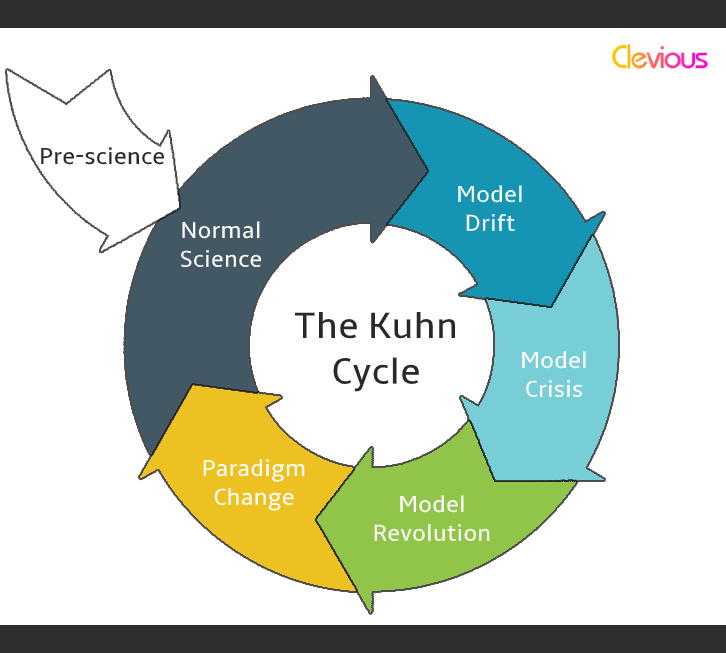The Evolution of Science: The Kuhn Cycle Explained
There’s no doubt that Thomas Kuhn viewed science from a different angle of that of Karl Popper: he viewed it from a historical perspective and observed that it evolves in a circular way similar to a certain extent to the evolution of the seasons of the year, the cycle is known as the Kuhn Cycle (See figure 1); Although the two perspectives have been reconciled in some of their parts, the unavoidable truth is that this view radically opposes the traditional idea that believes that science evolves through the accumulation of knowledge.
|
Figure 1
|
The central part of this evolution is the ideas of a paradigm and paradigm shift. Their starting point is not possible without the philosophical assumptions shared by the scientific communities that hold them (pre-science). After their births, they experience moments of happiness (normal science), moments of doubts (Model Drift), moments of sadness (Model Crisis) and moments of revolution (Model Revolution) followed by a new beginning of a new paradigm (Paradigm Shift).
- Normal Science: Scientific research is not hindered by the model’s limits.
- Model Drift: At this stage, problems and anomalies start to accumulate, they arise and the paradigm finds difficulty to address them.
- Model Crisis: The paradigm reaches a critical moment and becomes unable to address the new challenges in its way at all.
- Model Revolution: At this moment some experts start to promote the idea of the need for a new paradigm to replace the broken one.
- Paradigm Shift: These serious attempts will be crowned with a successful paradigm shift, the old is abandoned and the new one replaces it.
Source:
KHETTAB, Sid Ahmed. “The Evolution of Science: The Kuhn Cycle” The Ship Will Never Reach a Safe and an Ultimate Land, https://discourse.clevious.com/2020/01/ship-never-reaches-safe-and-ultimate-land.html.


